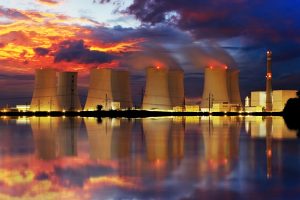Japanese Prime Minister Kishida Fumio is on an official state visit to the United States with a firm eye on underscoring the importance of the Japan-U.S. alliance in Asia. Kishida’s trip marks the first state visit by a Japanese leader to the U.S. in nine years.
Kishida is expected to move forward with joint economic and security projects with the Philippines and the United States as clashes between Beijing and Manila escalate in the South China Sea. It’s the first time the countries will meet for a trilateral summit.
The visit gives Kishida a global platform to outline Japan’s vision for Japan-U.S. relations as he faces a precarious political outlook at home. His public support rate hovers around a record low amid looming Liberal Democratic Party leader elections in September 2024.
Kishida framed the highly anticipated summit with U.S. President Joe Biden on April 10 as a meeting of two “global partners” tackling global issues. This will be followed by three-way talks between Biden, Kishida, and Philippine President Ferdinand Marcos Jr. to discuss developing “multilayered’ ties on April 11.
Separately, Kishida is also expected to address the U.S Congress, making him the second Japanese leader to do so after his predecessor, the late Abe Shinzo, in 2015. When questioned on the theme of the Congress speech, Kishida said his remarks will discuss the “broad issues” and the importance of future generations.
Japan is taking a more proactive stance countering maritime aggression by Beijing. It is preparing to boost its presence in the region by bolstering cooperation with the Philippines. On Monday, Kishida told reporters in Japan that “no country in Southeast Asia welcomes being backed in a corner when it comes to diplomacy and security.” He spoke about presenting Japan as a “valid option in important areas such as the economy“ in Asia by “showing its presence and taking on the responsibility.”
While the security emphasis of Kishida’s U.S. trip has been widely commented on, another aspect has been less discussed: cooperation on nuclear power.
Last December, Kishida announced that Japan was ready to lead decarbonization efforts across Asia in order to achieve net zero emissions by 2050. In turn, Japan has backed a U.S.-led declaration to raise the world’s nuclear energy capacity by 2050, disappointing proponents pushing for 100 percent renewable energy.
For Japan and the United States, a next generation nuclear power plant is the answer to phasing out Asia’s dependency on fossil fuel. As part of their trilateral cooperation, both countries will facilitate the development of “miniature” nuclear power plants, called Small Modular Reactors (SMRs), in the Philippines.
Currently, the country struggles with chronic power outages. It relies heavily on coal, which generates 60 percent of its electricity. Marcos hopes to restart the only nuclear power plant facility in the Philippines, which was constructed and immediately abandoned in the 1980s. The government plans to have it operational by 2032.
Next generation nuclear plants like SMRs are considered much safer and cheaper than their predecessors. However, the U.S. start-up manufacturing the technology, NuScale Power, canceled its plan to construct an SMR facility in Idaho in November last year. They explained the project – which would have been the first in the United States – was economically unfeasible, as inflation and increased construction costs meant the price of energy generated by the plant would be too high.
Japan has shifted its policy on nuclear power since the devastating 2011 tsunami and earthquake disaster. High-tech nuclear power is linked to Kishida’s Green Transformation (GX) strategy, which seeks to balance decarbonization with economic growth. Japan will support the project with research and specialist personnel.
There are also plans for Japan to open up a semiconductor base in the Philippines. In return, the Philippines will boost its supply of nickel, which is essential for the manufacturing of batteries.
Behind the scenes of bolstering economic ties is a rapidly deteriorating situation in the South China Sea. Japan, the United States, Australia, and the Philippines recently staged their first joint naval drill in the disputed, resource-rich South China Sea. The exercise included anti-warfare submarine training, communication drills, and sailing in formation.
While Kishida hopes to emphasize the importance of the Japan-U.S. relationship to the rest of the world, the new trilateral cooperation is a concerted effort to show a united front against Beijing and the kind of international society Japan hopes to realize.

































